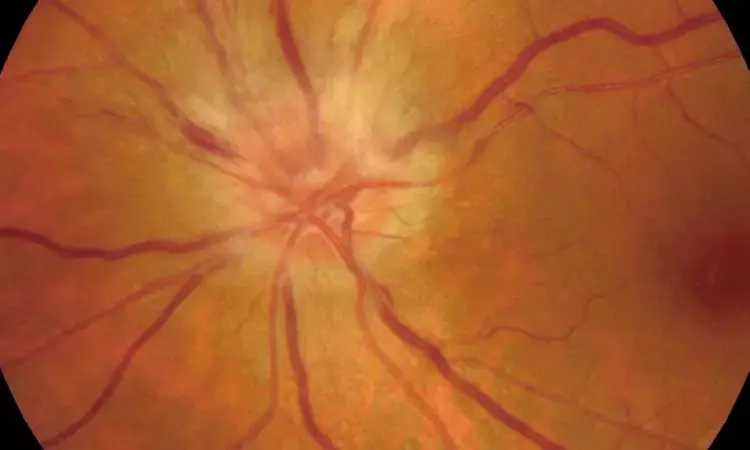- Home
- Medical news & Guidelines
- Anesthesiology
- Cardiology and CTVS
- Critical Care
- Dentistry
- Dermatology
- Diabetes and Endocrinology
- ENT
- Gastroenterology
- Medicine
- Nephrology
- Neurology
- Obstretics-Gynaecology
- Oncology
- Ophthalmology
- Orthopaedics
- Pediatrics-Neonatology
- Psychiatry
- Pulmonology
- Radiology
- Surgery
- Urology
- Laboratory Medicine
- Diet
- Nursing
- Paramedical
- Physiotherapy
- Health news
- Fact Check
- Bone Health Fact Check
- Brain Health Fact Check
- Cancer Related Fact Check
- Child Care Fact Check
- Dental and oral health fact check
- Diabetes and metabolic health fact check
- Diet and Nutrition Fact Check
- Eye and ENT Care Fact Check
- Fitness fact check
- Gut health fact check
- Heart health fact check
- Kidney health fact check
- Medical education fact check
- Men's health fact check
- Respiratory fact check
- Skin and hair care fact check
- Vaccine and Immunization fact check
- Women's health fact check
- AYUSH
- State News
- Andaman and Nicobar Islands
- Andhra Pradesh
- Arunachal Pradesh
- Assam
- Bihar
- Chandigarh
- Chattisgarh
- Dadra and Nagar Haveli
- Daman and Diu
- Delhi
- Goa
- Gujarat
- Haryana
- Himachal Pradesh
- Jammu & Kashmir
- Jharkhand
- Karnataka
- Kerala
- Ladakh
- Lakshadweep
- Madhya Pradesh
- Maharashtra
- Manipur
- Meghalaya
- Mizoram
- Nagaland
- Odisha
- Puducherry
- Punjab
- Rajasthan
- Sikkim
- Tamil Nadu
- Telangana
- Tripura
- Uttar Pradesh
- Uttrakhand
- West Bengal
- Medical Education
- Industry
Semaglutide and Liraglutide linked to Elevated Risk of Optic Nerve Damage in Seniors With Type 2 Diabetes: JAMA

USA: A recent research letter published in JAMA Ophthalmology has identified a potential link between certain glucagon-like peptide-1 receptor agonists (GLP-1 RAs) and an elevated risk of nonarteritic anterior ischemic optic neuropathy (NAION) in older adults with type 2 diabetes. The study, led by Kin Wah Fung from the Lister Hill National Center for Biomedical Communications, National Library of Medicine, National Institutes of Health, Bethesda, Maryland, found that semaglutide and liraglutide were particularly associated with higher risks among this drug class.
NAION is the second most frequent cause of vision loss due to optic nerve damage, with advanced age and long-standing type 2 diabetes recognized as major risk factors. Building on previous reports suggesting an association between semaglutide and NAION, the researchers conducted an extensive observational cohort study using data from Medicare enrollees aged 65 years and above who were prescribed antidiabetic medications between 2007 and 2021.
The study led to the following findings:
- The study analyzed data from over 3.8 million patients with type 2 diabetes.
- Around 15% of these patients received GLP-1 receptor agonists.
- Semaglutide (4.9%) and liraglutide (4.2%) were the most commonly prescribed GLP-1 RAs.
- During a median follow-up of 3.7 years, 0.2% of patients developed nonarteritic anterior ischemic optic neuropathy (NAION).
- Use of GLP-1 RAs as a class was associated with a higher risk of NAION compared to other second-line antidiabetic drugs.
- Semaglutide (HR 1.39) and liraglutide (HR 1.25) showed the strongest associations with NAION.
- The median time between starting GLP-1 RA therapy and NAION diagnosis was 3.3 years.
- Insulin use was linked to a higher risk of NAION compared with metformin only (HR 1.43).
- Male sex, White race, and dual Medicare-Medicaid eligibility were associated with increased risk.
- Rural residence and a history of diabetic retinopathy, chronic kidney disease, or obstructive sleep apnea were the additional risk factors.
- The use of amiodarone, an antiarrhythmic medication, was also linked to elevated risk.
- Age did not appear as a significant variable, likely due to the narrow age range of the cohort.
The findings reinforce earlier studies that flagged semaglutide as a potential risk factor for NAION, though the current analysis draws on a substantially larger patient base and a greater number of NAION cases. The researchers noted that excluding patients on metformin alone from the reference group was crucial to avoid overestimating the adverse effects of GLP-1 RAs, given that these individuals often have better glycemic control.
While the study provides important insights, the authors caution that certain limitations must be considered. These include reliance on diagnostic codes, the lack of precise data on the onset of type 2 diabetes before Medicare enrollment, and the restricted age range of participants, which may limit the applicability of findings to younger populations.
"Given the growing popularity of GLP-1 RAs for diabetes management and weight control, the researchers emphasize the need for further investigation into their ocular safety profile. They highlight that NAION, although rare, can result in permanent vision loss, making it essential for clinicians to weigh potential risks when prescribing these medications to older adults with type 2 diabetes," the authors concluded.
Reference:
Fung KW, Baye F, Baik SH, McDonald CJ. GLP-1 RAs and Risk of Nonarteritic Anterior Ischemic Optic Neuropathy in Older Patients With Diabetes. JAMA Ophthalmol. Published online July 31, 2025. doi:10.1001/jamaophthalmol.2025.2299
Dr Kamal Kant Kohli-MBBS, DTCD- a chest specialist with more than 30 years of practice and a flair for writing clinical articles, Dr Kamal Kant Kohli joined Medical Dialogues as a Chief Editor of Medical News. Besides writing articles, as an editor, he proofreads and verifies all the medical content published on Medical Dialogues including those coming from journals, studies,medical conferences,guidelines etc. Email: drkohli@medicaldialogues.in. Contact no. 011-43720751


